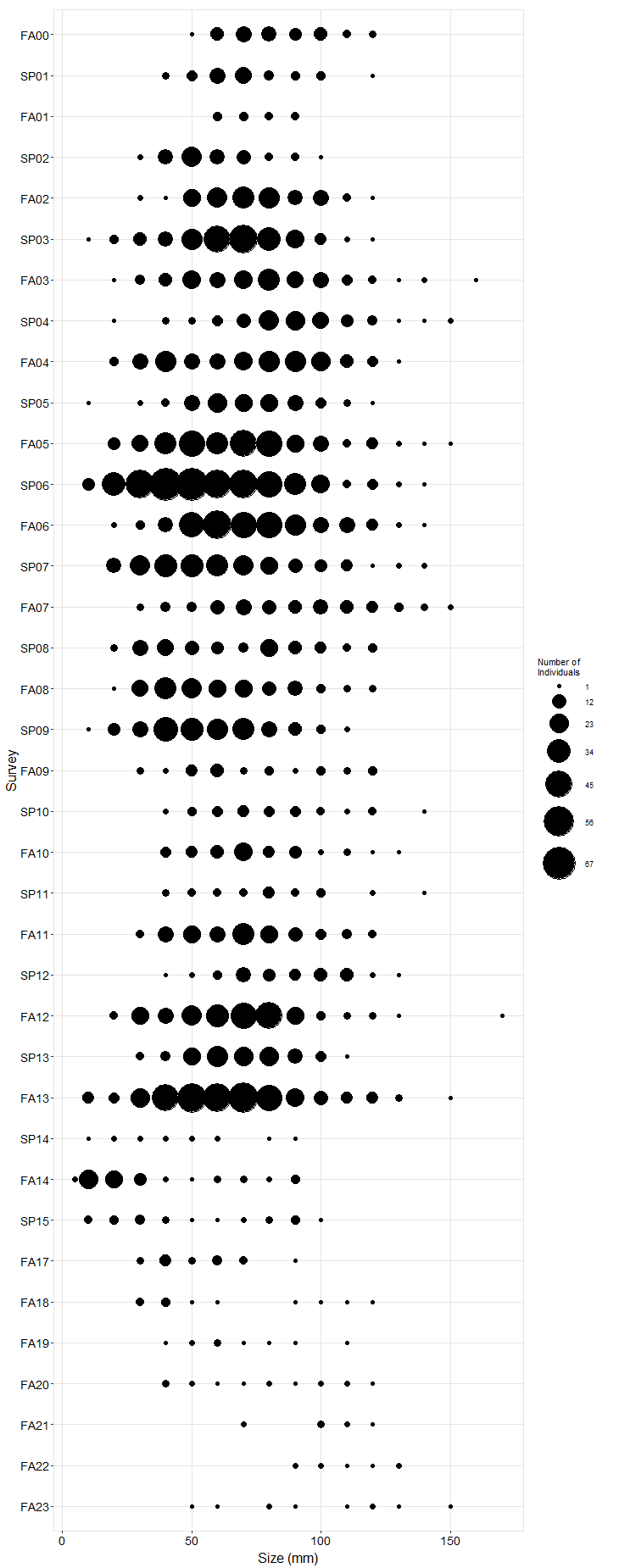
Long-Term Monitoring Trend Graphs
Barnacles (a mixture of Chthamalus fissus/dalli and Balanus glandula) within plots at Occulto declined substantially during the first few years of monitoring. An uptick in cover occurred between 2007-2014, but in recent years (as of 2024) barnacles have again declined. While bare space was still present in the plots, much of it has become occupied by mussels and several algal species, including Endocladia, Silvetia and Cladophora. Barnacles recruiting into this site tended to settle above the barnacle plots, in an area that is at a higher tidal elevation than barnacles were commonly found when monitoring began at Occulto nearly 40 years ago. Thus, although barnacles in the plots have declined substantially, they are still common at the site overall. Mytilus cover within the mussel plots at Occulto remained high over time until 2023 when nearly all mussels were removed, possibly by storm-associated wave disturbance. Because declines were so severe, it could be several years before plots fully recover.
In plots established to target Endocladia, Mytilus steadily increased in cover, reaching an all-time high of 55% in 2008. Mussel cover has since gradually declined, replaced in part by barnacles. Presence of Mytilus does not necessarily exclude Endocladia, as the alga can grow on top of mussels. However, in recent years, Endocladia has declined at a site-wide scale.
Pisaster counts at Occulto were highly variable, largely because they are influenced by sampling conditions, as much of the plot consists of steep reef edges that can be difficult to sample when the swell is large. However, as with other sites in Santa Barbara County, ochre stars declined substantially with the arrival of sea star wasting syndrome. Sea star size typically spanned the entire range with both juvenile and large individuals present, but the apparent lack of new recruitment to the site since 2017 suggests that recovery will be slow. The sea star plot could not be sampled in fall 2015 and fall 2016. In fall 2017, 2018 and 2019 the plot had to be sampled from above due to poor sampling conditions, so it is possible that sea stars normally counted from below by climbing into the channel surrounding the reef could have been missed. However, despite these constraints, sea stars at Occulto are nowhere near as abundant as they were prior to sea star wasting syndrome.
In order to standardize species resolution across all MARINe groups and over time, some species (typically rare) were lumped for graphical presentation of Long-Term monitoring data. See lumped categories for definitions (some variation occurs between methods and over time).
If you experience any barriers accessing the trend graphs below, please contact (pacificr@ucsc.edu) for help.
Photo Plots

Below are the trends observed for each Photo Plot target species at this site. Long-Term percent cover trend graphs also include any species that reached a minimum of 25% cover during any single point in time within a given target species assemblage. Breaks in trend lines represent missed sampling events. For additional species observed that did not meet this 25% threshold, please use the Graphing Tool.
Chthamalus/Balanus (Acorn Barnacles) – percent cover
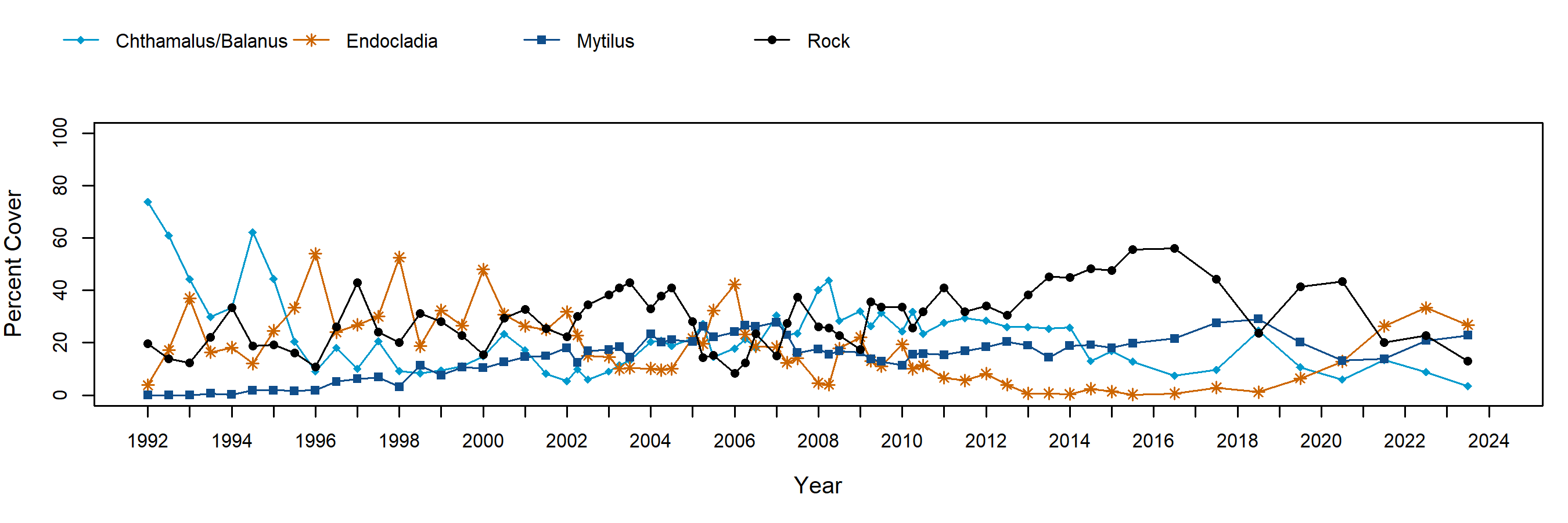
Chthamalus/Balanus (Acorn Barnacles) – motile invertebrate counts
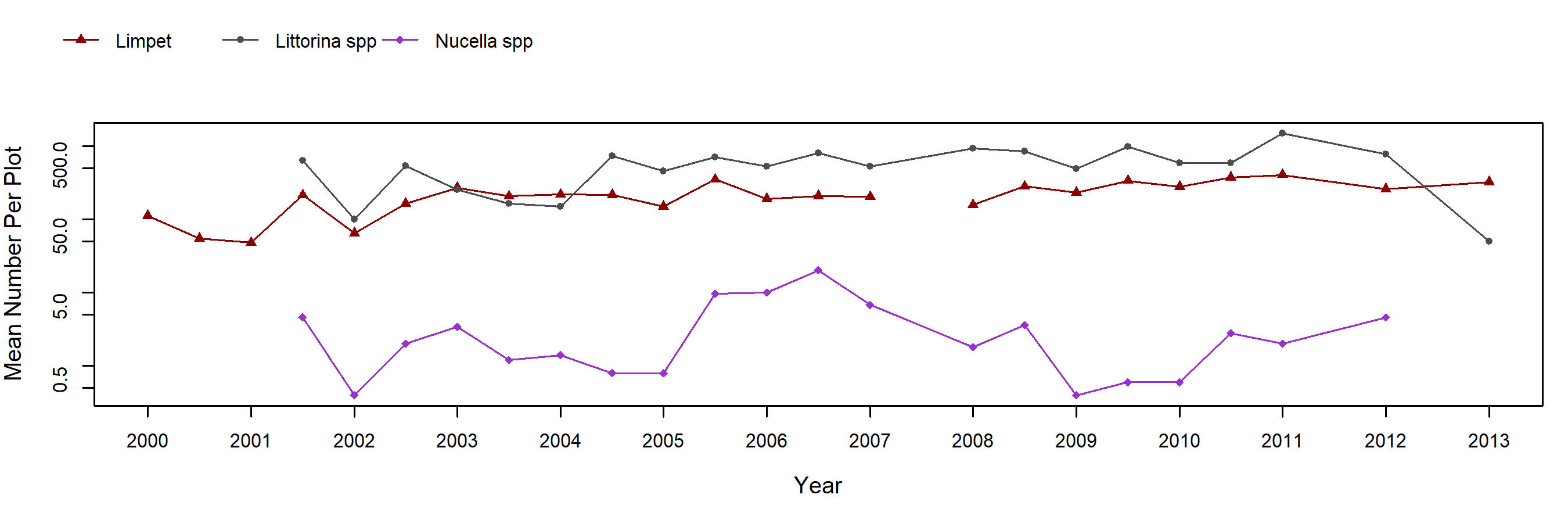
Mytilus (California Mussel) – percent cover
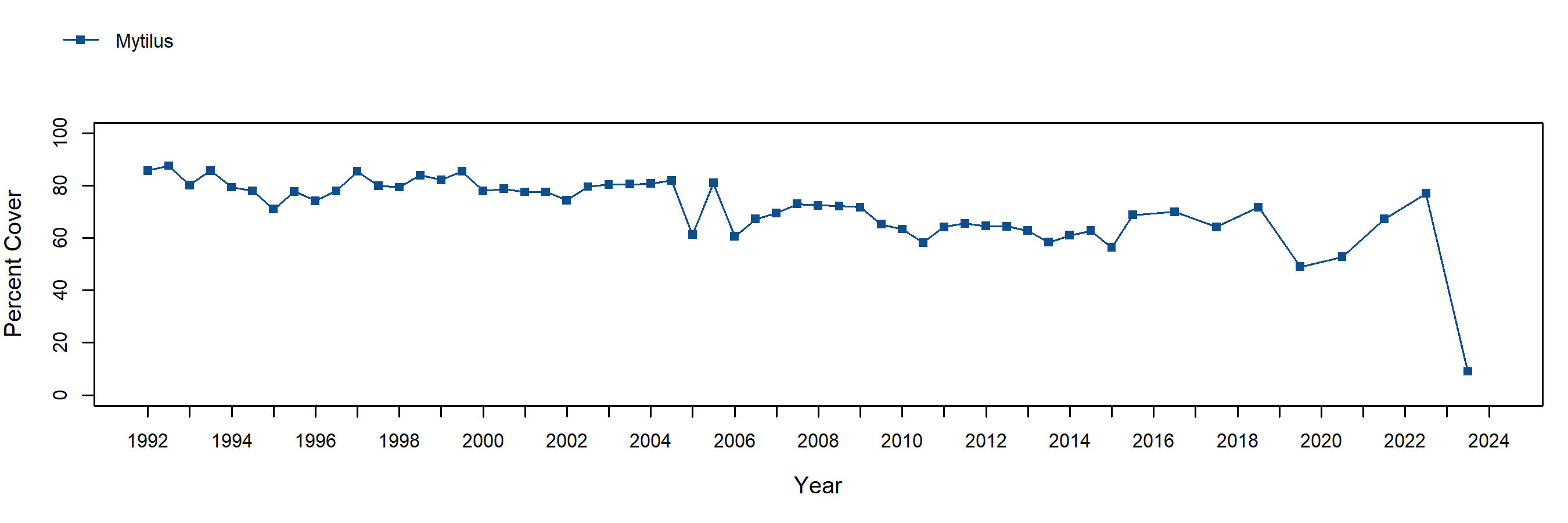
Mytilus (California Mussel) – motile invertebrate counts
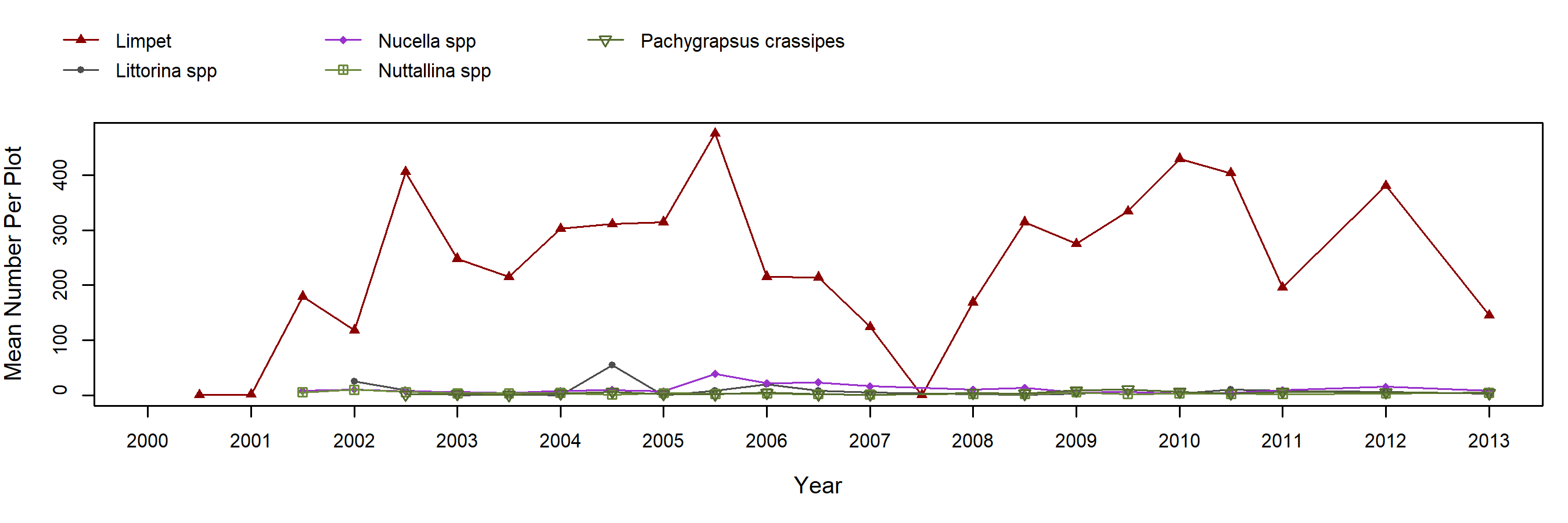
Endocladia (Turfweed) – percent cover
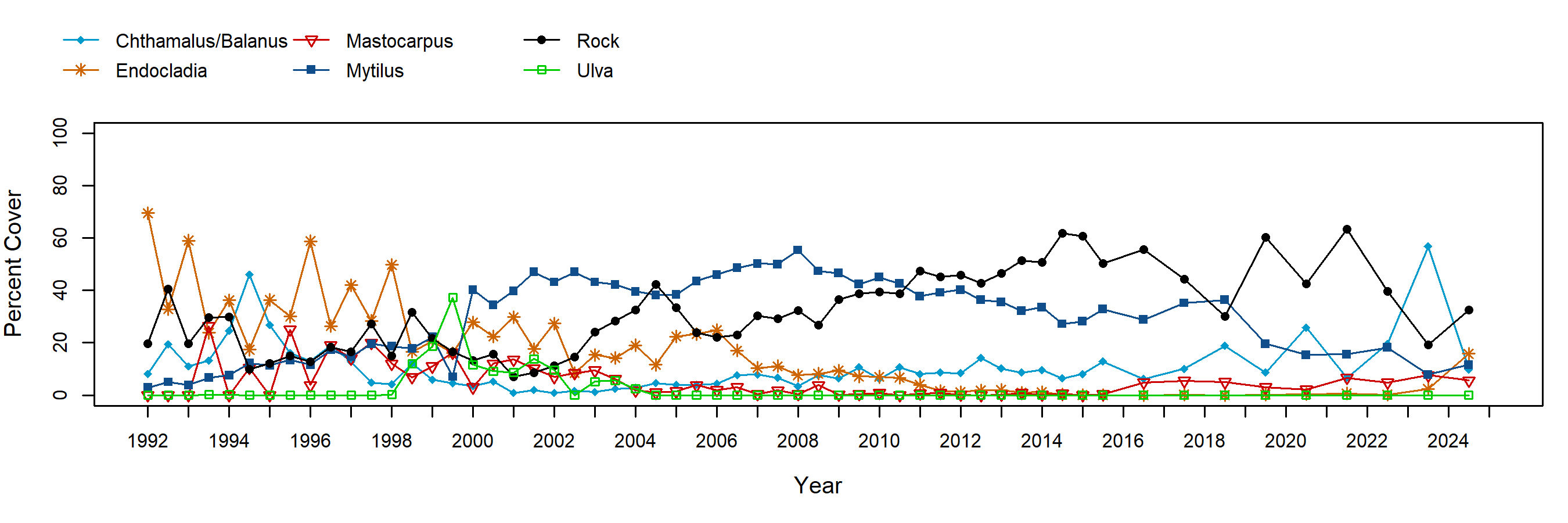
Endocladia (Turfweed) – motile invertebrate counts

Species Counts and Sizes

Species Counts and Sizes (where recorded) for Pisaster are shown below for this site. At some sites, other sea star species and Katharina are counted in addition to Pisaster. The sum of all individuals across all plots is displayed. Note that data gaps are represented by breaks in long-term count trend lines, but are not shown in size plots.
Pisaster ochraceus (Ochre Star) – counts
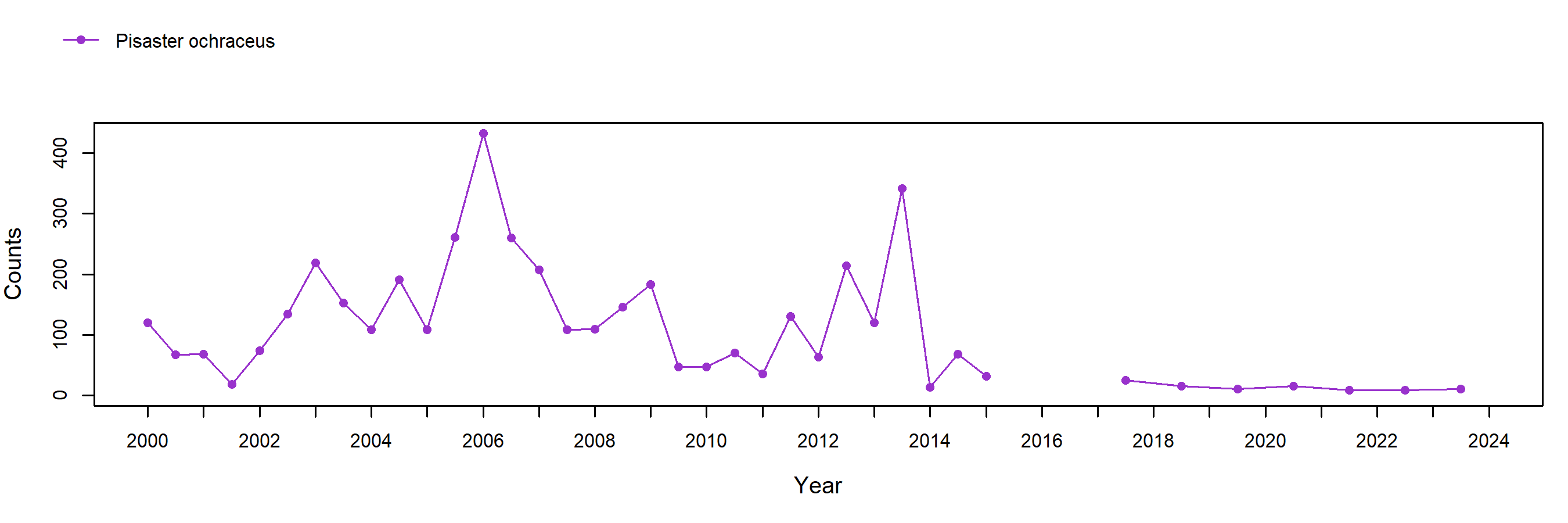
Pisaster ochraceus (Ochre Star) – sizes
